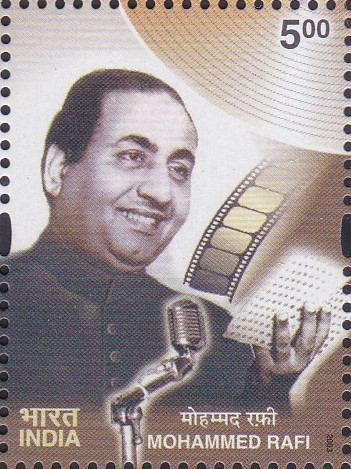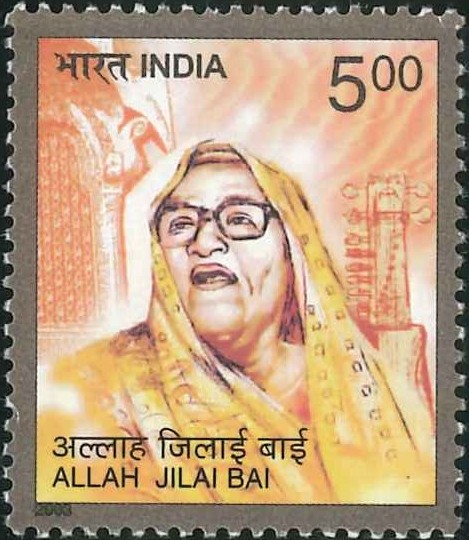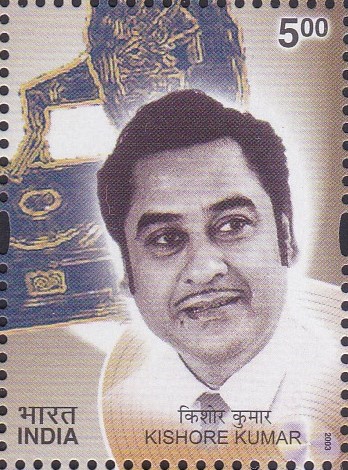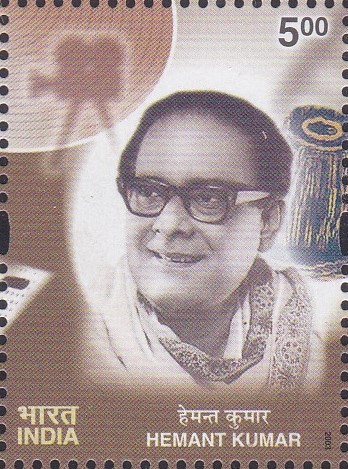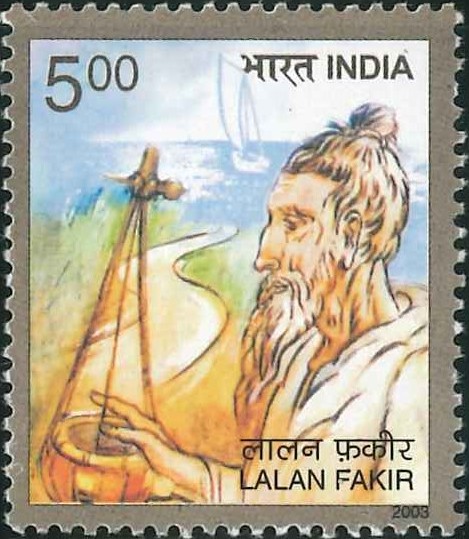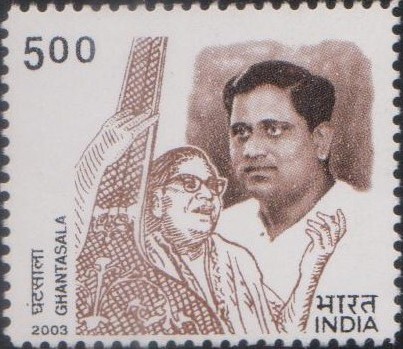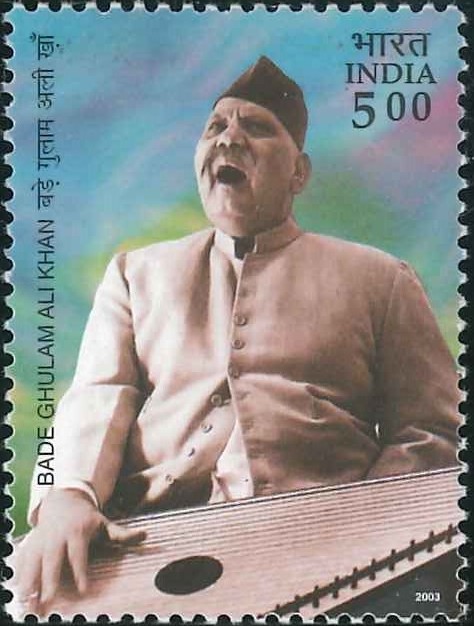
Bade Ghulam Ali Khan
A commemorative postage stamp on Bare Gulam Ali Khan (Sabrang), an Indian Hindustani classical vocalist (Patiala Gharana) :

 Issued by India
Issued by India
Issued on Jun 30, 2003
Issued for : The Department of Posts is happy to issue a commemorative postage stamp on Bade Ghulam Ali Khan.
Design : The stamp portrays Khan Sahib in concert, with Surmandal in hand. The design of the First Day Cover with a picture of Kamran’s baradari brings back memories of the days when he used to do riyaz on the banks of river Raavi.
Credits :
Stamp & FDC : Bharti Mirchandani
Cancellation : Alka Sharma
Type : Stamp, Mint Condition
Colour : Four Colour
Denomination : 500 Paise
Overall Size : 2.90 x 3.91 cms.
Print Size : 2.90 x 3.91 cms.
Perforation : 13.5 x 13.5
Paper : Matt Chromo
Stamps Printed : 0.4 million
Number per issue sheet : 40
Printing Process : Photo Offset
Printer : Calcutta Security Printers Ltd.
Name : Ustad Bade Ghulam Ali Khan
Born on Apr 2, 1902 at Kasur, Punjab, British India [now Qasur, Kasur district, Pakistan]
Died on Apr 23, 1968 at Hyderabad, India
About :
- An unquestioned genius, Bade Ghulam Ali Khan (1902-1968) was one of the greatest vocalists of the 20th century. He left an indelible imprint on Indian music, particularly the Patiala Gharana.
- Bade Ghulam Ali Khan received his initial musical training in the family itself, his father Ali Baksh Khan of Kasur, now in Pakistan, having been a reputed Dilruba player and his uncle, Kale Khan, an illustrious musician of the Patiala Gharana. The youngster was blessed with a beautiful voice and all the essential attributes of a great musician – vitality, concentration, tact, stamina, and above all, strength of character. Though he made his debut in 1939 at the All India Music Conference held in Calcutta, his first public concert in Bombay three-four years later proved to be the big break in his career. There was no stopping Bade Ghulam Ali Khan after that. He literally took the country by storm and went ahead to endear himself to music lovers in different corners of the sub-continent. In 1958, he shifted from Lahore to settle in Bombay.
- Though essentially an exponent of Khayal ‘gayaki’, he also sang bhajans and thumris with equal perfection. A battered-looking harp that he is believed to have collected from a junk shop, was refined by him as a suitable accompaniment. Thus he created the Surmandal which was integral to his music.
- Ustad Bade Ghulam Ali Khan composed over a hundred khayals and thumris. He also composed their music and popularise them by singing them in various conferences, as well as by recording them. Available both in the form of disc records and cassettes, there is heavy demand for them all over the world. A complete mastery over the sargams was yet another aspect of his rare genius.
- Khan Sahib was a man at peace with himself. Hi admirers believed that the harmony of his music came from the harmony of his being. He was warm, witty and wise, and those who had the privilege of knowing him could never forget his wonderful smile.
- Several laurels came in search of him. Ustad Bade Ghulam Ali Khan was elected Fellow of Sangeet Natak Academy and was honoured by the President of India with the title of ‘Padma Bhushan’. Vishwa Bharati University conferred the title of ‘Doctor of Literature’ on him.
- Text : Based on material furnished by the Bade Ghulam Ali Khan Yadgar Sabha.


